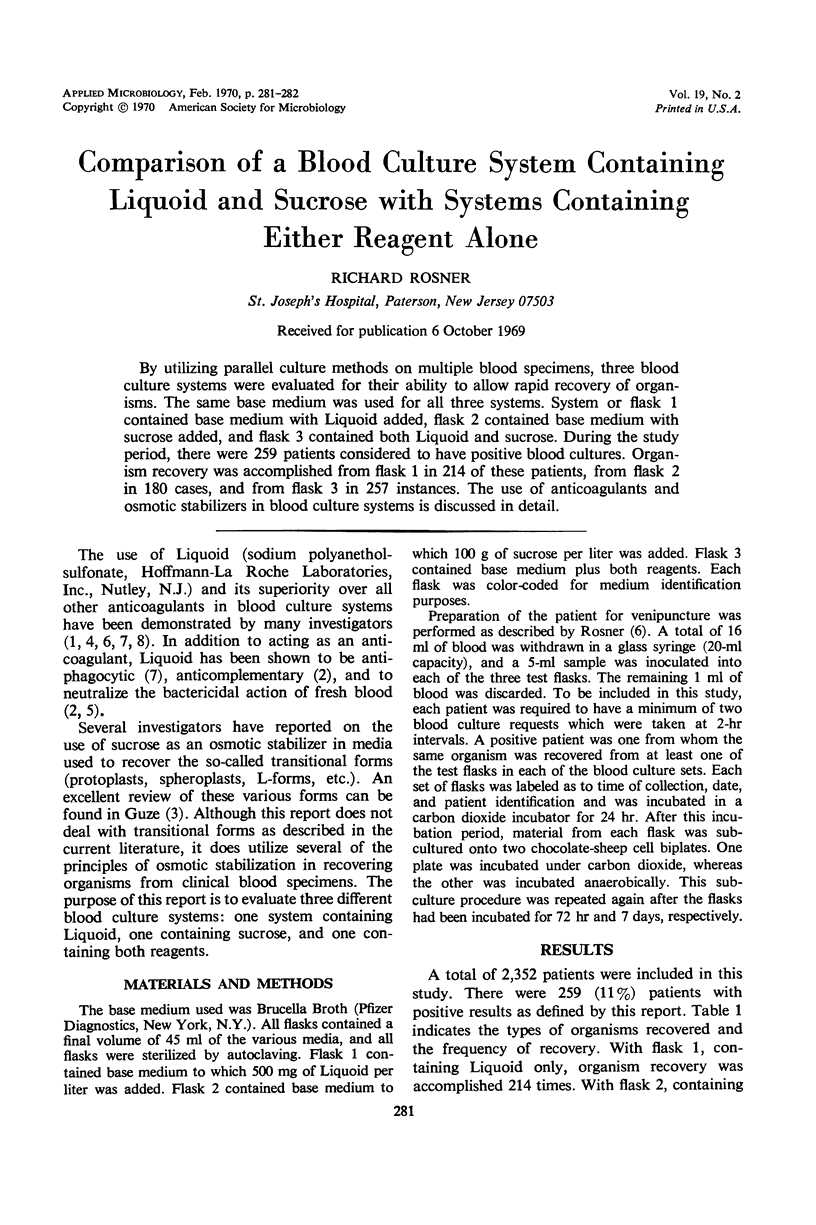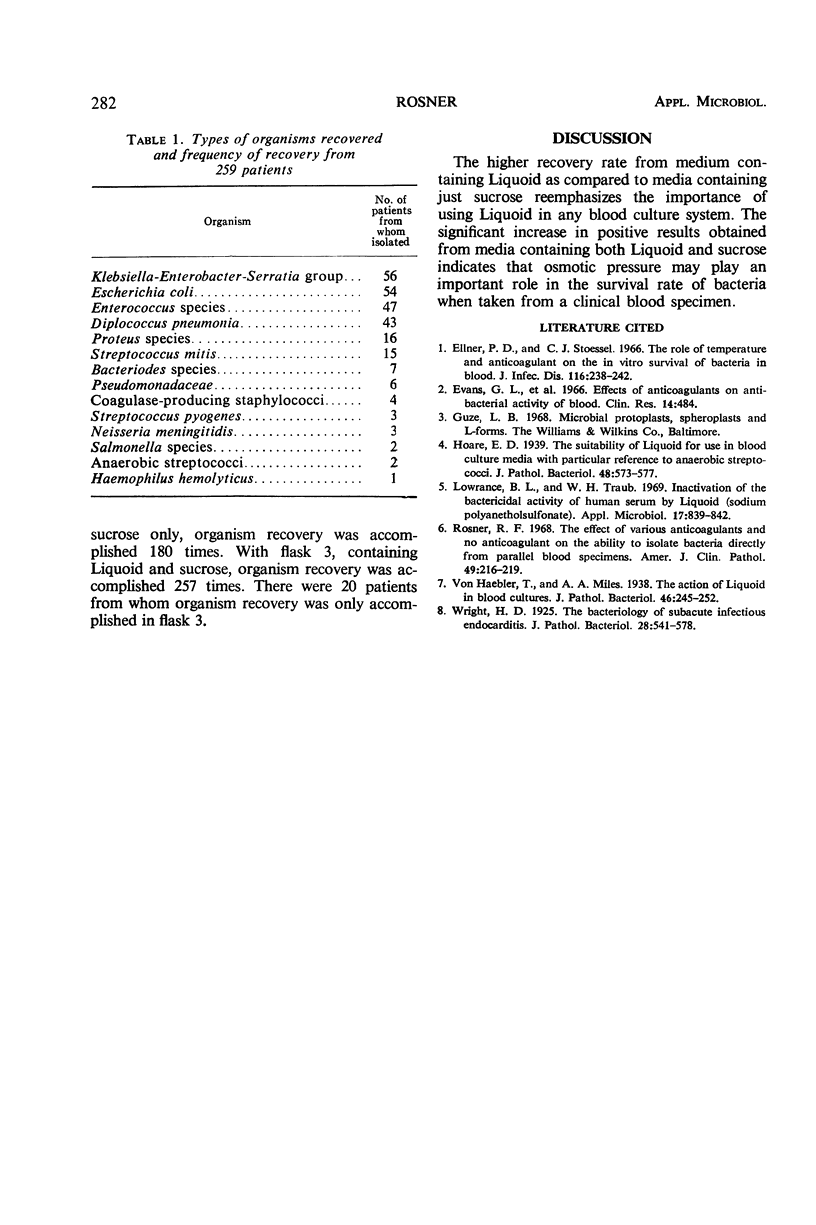Abstract
By utilizing parallel culture methods on multiple blood specimens, three blood culture systems were evaluated for their ability to allow rapid recovery of organisms. The same base medium was used for all three systems. System or flask 1 contained base medium with Liquoid added, flask 2 contained base medium with sucrose added, and flask 3 contained both Liquoid and sucrose. During the study period, there were 259 patients considered to have positive blood cultures. Organism recovery was accomplished from flask 1 in 214 of these patients, from flask 2 in 180 cases, and from flask 3 in 257 instances. The use of anticoagulants and osmotic stabilizers in blood culture systems is discussed in detail.
Full text
PDF

Selected References
These references are in PubMed. This may not be the complete list of references from this article.
- Ellner P. D., Stoessel C. J. The role of temperature and anticoagulant on the in vitro survival of bacterial in blood. J Infect Dis. 1966 Apr;116(2):238–242. doi: 10.1093/infdis/116.2.238. [DOI] [PubMed] [Google Scholar]
- Lowrance B. L., Traub W. H. Inactivation of the bactericidal activity of human serum by liquoid (sodium polyanetholsulfonate). Appl Microbiol. 1969 Jun;17(6):839–842. doi: 10.1128/am.17.6.839-842.1969. [DOI] [PMC free article] [PubMed] [Google Scholar]
- Rosner R. Effect of various anticoagulants and no anticoagulant on ability to isolate bacteria directly from parallel clinical blood specimens. Am J Clin Pathol. 1968 Feb;49(2):216–219. doi: 10.1093/ajcp/49.2.216. [DOI] [PubMed] [Google Scholar]


